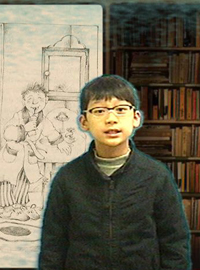
null
null
null
How to Help Presentation at Home

Having to speak in front of an audience scares most people, but if your children learn crucial skills in their childhood, they can avoid being ever anxious about speaking in public. There are many other benefits of teaching children how to speak in front of people. It helps to build their communication skills and confidence. They learn how to capture the audience's attention, develop charisma, and write their own speech. They also discover their own potential.
Learn by practice:
Using your computer with a web cam, show your child how to record videos. After recording, give your child constructive feedback. By watching his/her own videos, your child will realize how he/she comes across to other people. It's a great way to learn and improve.
Find interesting examples:
Look on YouTube and other video sharing websites for speeches and presentations. Find some good and some poor examples. Watching poor presentations might teach your child more than watching a good speech. Sit together with your child and discuss: Was it a good or a poor presentation? Why was it good? Why was it poor? What could you personally apply to your own presentation in the future?
Provide opportunities:
Whenever there is an important event, such as a wedding celebration, an anniversary party, a friend or relative's birthday, etc. allow your child to speak. The more exposure your child gets to bigger groups the better. Your child will gain a powerful advantage and gradually lose the fear of public speaking.
Use favorite subject:
Let your child's imagination run wild. Have your child present on things he/she has made or constructed, a favorite sport, or a short story he/she has written. Have your child do this on a regular basis at home.
Incorporate games:
You can help your child to avoid using long pauses or words/sounds while speaking such as "um," "uh," "like," "er," and "you know." Eliminating these words and sounds creates focus on purposeful speaking and increases vocabulary and articulation. Take turns with your child to give a short presentation. Take note on a paper how many "um's" were uttered. Guess each other's number. Repeat the same process and see whose number has been reduced.





